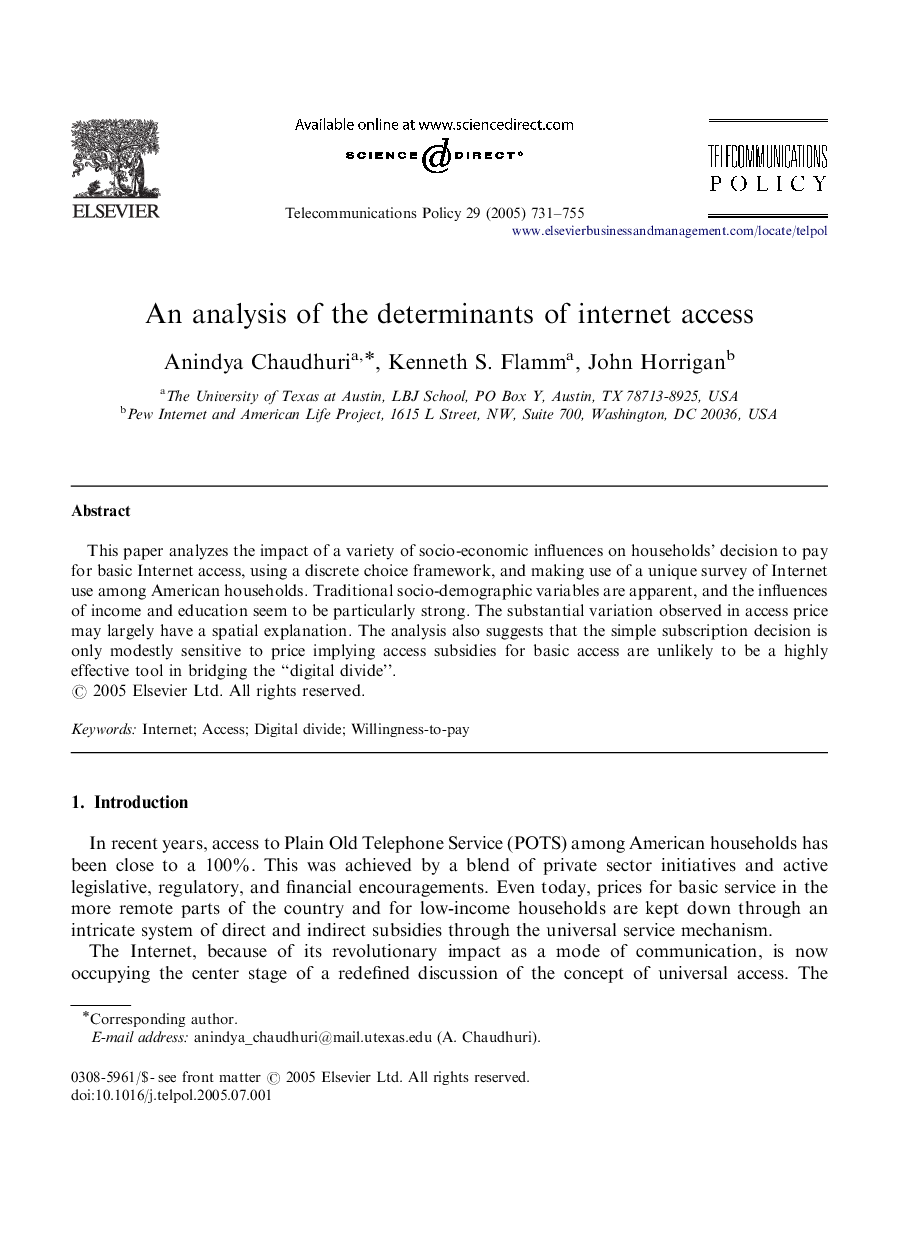| Article ID | Journal | Published Year | Pages | File Type |
|---|---|---|---|---|
| 9673203 | Telecommunications Policy | 2005 | 25 Pages |
Abstract
This paper analyzes the impact of a variety of socio-economic influences on households' decision to pay for basic Internet access, using a discrete choice framework, and making use of a unique survey of Internet use among American households. Traditional socio-demographic variables are apparent, and the influences of income and education seem to be particularly strong. The substantial variation observed in access price may largely have a spatial explanation. The analysis also suggests that the simple subscription decision is only modestly sensitive to price implying access subsidies for basic access are unlikely to be a highly effective tool in bridging the “digital divide”.
Related Topics
Physical Sciences and Engineering
Computer Science
Information Systems
Authors
Anindya Chaudhuri, Kenneth S. Flamm, John Horrigan,
